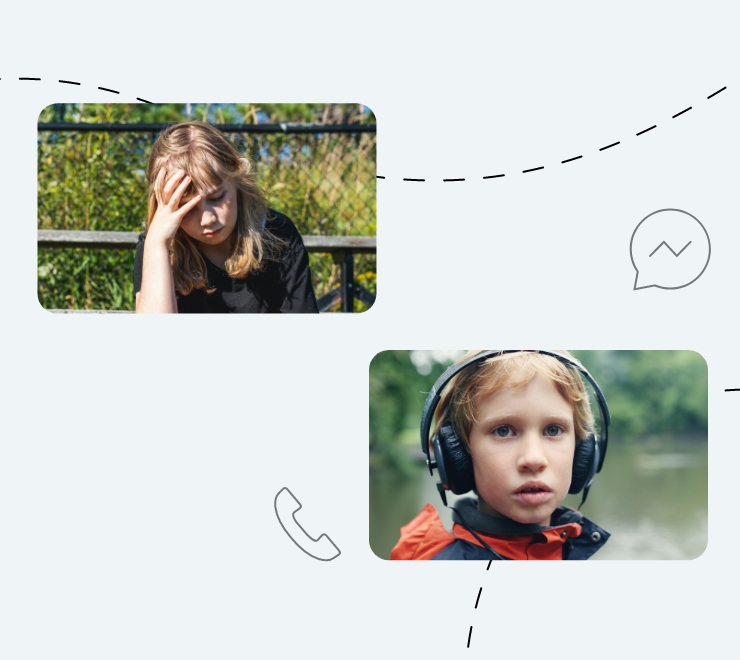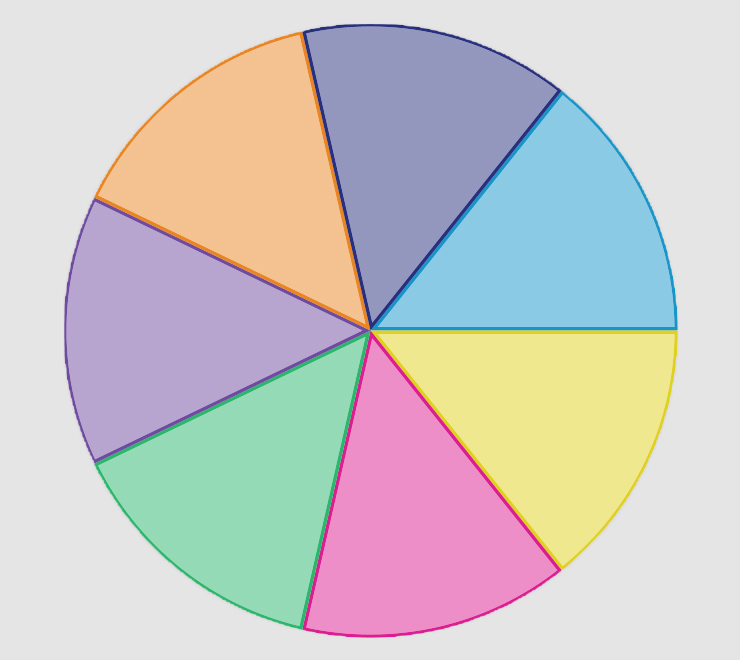Why might I want to have a safety plan to cope with disordered eating?
If a person continues to experience symptoms of disordered eating over time, they may start to experience more intense and harmful thoughts, feelings and behaviours. For some people, disordered eating may be an early sign of an eating disorder. Eating disorders can lead to various physical health concerns (e.g. low heart rate, fainting, effects on growth, etc.). Recognizing when / how disordered eating affects your daily life and understanding what coping strategies / supports work best for you may help you manage disordered eating and reduce potential harm to your well-being. A safety plan can help you identify ways to cope and plan how to get support when you may need it.
How can I create a safety plan to cope with disordered eating?
Creating a safety plan ahead of time (e.g. when you’re feeling calm and in control of your thoughts, etc.) can help you understand yourself and what tools may be available to you for support when you’re navigating disordered eating. You may also find it worthwhile to ask people you trust to help you create your safety plan (e.g. a family / community member, professional counsellor, trained, volunteer crisis responder, youth group leader, Elder, etc.). The person(s) you trust may be able to offer perspective, provide suggestions and / or keep a copy of your safety plan for when you need it (if you’re comfortable with that).
It’s OK if your plan changes over time as you find coping strategies that work better for you, you discover new strategies or your situation changes. Your safety plan is unique to you and it’s OK if any prompts / examples offered in this article don’t apply to you. For your plan to be helpful when you’re experiencing disordered eating, we encourage you to make your plan as specific to you and your life as possible.
The image below shows one example of how you can format your safety plan. You can map out your plan in any other way that may work for you, too. Consider where you want to keep your safety plan so you can find it quickly when you need it. For example, you could keep / save it on a phone, tablet or computer (if you have access to one), in a notebook / journal or in places you may experience disordered eating thoughts / behaviours (e.g. in a kitchen, in a bathroom, by a scale, etc.).
You can tap on the link to the PDF tool below to fill out your own safety plan. You can begin by filling it out on your device and then save / print / take a photo of it. Or you can start by downloading it and then printing a copy to fill out offline. You can also come back to this tool any time if you’re unable to save / print a copy now.
Identify what may contribute to disordered eating for you
If you’ve ever experienced disordered eating before, you may be aware of some familiar patterns, situations and / or events in which you may start to notice disordered eating thoughts, feelings or behaviours (e.g. comments by others about your body and / or eating habits, exposure to content that shames certain body types, etc.). Understanding what stressors or events can contribute to thoughts / feelings of insecurity about your body and other difficult emotions could help you recognize when you may need to use your coping strategies or get support.
- Things that may bring up disordered eating for me:
Reflect on how disordered eating is affecting your life
It may be helpful to think about the ways disordered eating is affecting your daily life. Try thinking about all of the things that make you happy or hold meaning and importance to you. Consider how those things are potentially more challenging with disordered eating thoughts, feelings and behaviours. For example, participating in physical activities (e.g. your favourite sport / game, dancing, exercising, riding a bike, etc.) may be more challenging if your body isn’t well nourished. You may also find it more difficult to enjoy a spontaneous meal with someone you care about. These are just some examples of the ways disordered eating could affect your life. Your experiences are unique and you may identify other ways in which your thoughts, feelings and behaviours are affecting things in your life. Understanding where your values and actions don’t match may help you consider new coping strategies / actions that better fit with what matters to you.
- Things in my life that are more difficult with disordered eating:
Notice signs that tell you when you may need support
It can also be helpful to identify warning signs that you may engage in disordered eating. Warning signs can be changes in your thoughts (e.g. thinking “I’m not good enough,” etc.), feelings (e.g. feeling worried, insecure, overwhelmed, etc.), behaviours (e.g. avoiding social gatherings that involve food, etc.) and / or bodily sensations (e.g. feeling hungry, etc.). It can also be helpful to consider what changes other people around you may notice, and how they can know when and how to offer support. Not all changes in your thoughts, feelings, behaviours and bodily sensations are signals that you’re engaging / may engage in harmful actions. But by recognizing your warning signs, you might know when it may be helpful to connect with your supports / use your coping strategies.
- Things that tell me I may need support (e.g. certain thoughts, specific feelings, particular behaviours, etc.):
Use your coping strategies to manage difficult thoughts / feelings in the moment
There are things you can do to take care of yourself, your body and your eating habits if you’re navigating disordered eating. Can you remember what’s worked for you in the past? It can be helpful to think about things you’ve learned / tried before that you can either try on your own, or with people you trust, to manage difficult thoughts / feelings in the moment. You may find it useful to have a list of go-to strategies you can choose from when you begin to notice your warning signs or you’re experiencing disordered eating. If one strategy isn’t feeling helpful in the moment, you can try another. Having a list to pick and choose from may help you to try a variety of strategies until you find the one you need. Here are a few ideas to consider that may help you cope with disordered eating:
- name your emotions (e.g. “I’m feeling sad, frustrated, anxious…,” etc.) to help you remind yourself you’re more than what you’re feeling in this moment and the emotions you’re experiencing will pass
- practise self-acceptance by trying to move your thinking away from the things you can’t change about yourself and reflecting on your body’s strengths and abilities rather than appearance
- practise mindfulness by noticing your thoughts, emotions and the way your body feels without judgment
- distract yourself by doing something you enjoy or trying something new (e.g. drawing, connecting with nature, dancing, watching a TV show / movie, reading, attending a community event, playing a game, etc.)
- spend time connecting with someone you care about (in-person or virtually)
- change the way you talk to yourself by writing / typing / recording / etc. positive affirmations (uplifting phrases or statements) about yourself (e.g. “I am enough just the way I am,” etc.) and posting them in places where you can easily refer to them (e.g. stuck on a mirror, saved as a background on a device, etc.)
- take a break from scrolling if you haven’t been feeling good on social media (or try following a new account that inspires you!)
- ground yourself by focusing on a breathing exercise, releasing tension in your body and / or engaging in mind-body movements such as yoga
- journal about your thoughts

































